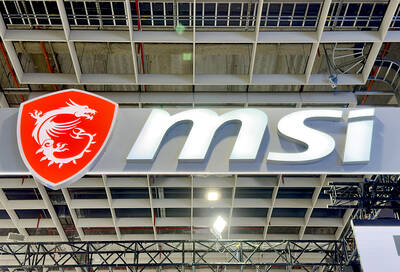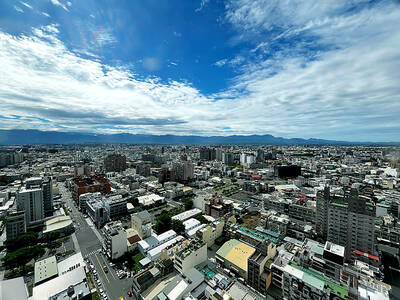Apple Inc said on Friday that it was “stunned” to find that its iPhones have for years been using a “totally wrong” formula to determine how many bars of signal strength they are getting.
Apple said that’s the reason behind widespread complaints from users that the latest model, iPhone 4, can show a sudden plunge in signal strength when they hold it in a way that covers a small black strip on one edge of the phone. Users have jokingly called this the “death grip” for the phone.
That drop seems exaggerated because the phone can wrongly display four or five bars of signal strength when it shouldn’t, Apple said.
“Their big drop in bars is because their high bars were never real in the first place,” the company said in a statement to users.
Yet the statement that the bar display is “totally wrong” is surprising, since there is no standard formula in the industry for translating signal strength to bars.
The company said it will fix the formula to one recommended by AT&T Inc through a free software update within a few weeks for the most recent iPhone models, 3G, 3GS and 4. However, the “wrong” formula goes back as far as the original iPhone, launched in 2007.
AT&T, the iPhone’s exclusive carrier in the US, has borne much of the users’ blame for dropped calls and poor wireless performance.
In saying that the phones have been showing too many bars, Apple is putting the spotlight on the network’s performance. AT&T declined to comment on Friday.
If the phones haven’t been giving a good indication of signal strength, users may have been missing clues that they should go to a location with a better signal to place a call, or that they’re holding the phone incorrectly.
Apple apologized to customers “for any anxiety we may have caused.”
“We are also making bars 1, 2 and 3 a bit taller so they will be easier to see,” the company said in the statement.
Apple launched the iPhone 4 on June 24 in the US and four other countries and users began complaining on Apple’s customer support Web site within hours.
Some outside engineers and users have blamed the iPhone 4’s apparent reception problems on the novel design that incorporates its antenna into the case.
But the company said that any phone will show reduced reception if held in a way that covers the antenna, usually mounted at the rear and bottom of a phone. It maintains that iPhone 4’s wireless performance is better than previous models.
Spencer Webb, president of antenna design company AntennaSys Inc, found in cursory testing that switching to the “death grip” took an iPhone 4 from five bars to one, but that didn’t interrupt a call in progress.
Dropped calls are what really rile users, he said, not the bars.
At the same time, Apple could have defused the situation by including a simple card in the iPhone’s packaging, showing how best to hold it, Webb said.
In the US, AT&T has embarked on a multibillion dollar program to upgrade its network capacity, particularly in New York and San Francisco, where the iPhone is particularly popular.

Meta Platforms Inc offered US$100 million bonuses to OpenAI employees in an unsuccessful bid to poach the ChatGPT maker’s talent and strengthen its own generative artificial intelligence (AI) teams, OpenAI CEO Sam Altman has said. Facebook’s parent company — a competitor of OpenAI — also offered “giant” annual salaries exceeding US$100 million to OpenAI staffers, Altman said in an interview on the Uncapped with Jack Altman podcast released on Tuesday. “It is crazy,” Sam Altman told his brother Jack in the interview. “I’m really happy that at least so far none of our best people have decided to take them

BYPASSING CHINA TARIFFS: In the first five months of this year, Foxconn sent US$4.4bn of iPhones to the US from India, compared with US$3.7bn in the whole of last year Nearly all the iPhones exported by Foxconn Technology Group (富士康科技集團) from India went to the US between March and last month, customs data showed, far above last year’s average of 50 percent and a clear sign of Apple Inc’s efforts to bypass high US tariffs imposed on China. The numbers, being reported by Reuters for the first time, show that Apple has realigned its India exports to almost exclusively serve the US market, when previously the devices were more widely distributed to nations including the Netherlands and the Czech Republic. During March to last month, Foxconn, known as Hon Hai Precision Industry

PLANS: MSI is also planning to upgrade its service center in the Netherlands Micro-Star International Co (MSI, 微星) yesterday said it plans to set up a server assembly line at its Poland service center this year at the earliest. The computer and peripherals manufacturer expects that the new server assembly line would shorten transportation times in shipments to European countries, a company spokesperson told the Taipei Times by telephone. MSI manufactures motherboards, graphics cards, notebook computers, servers, optical storage devices and communication devices. The company operates plants in Taiwan and China, and runs a global network of service centers. The company is also considering upgrading its service center in the Netherlands into a

Taiwan’s property market is entering a freeze, with mortgage activity across the nation’s six largest cities plummeting in the first quarter, H&B Realty Co (住商不動產) said yesterday, citing mounting pressure on housing demand amid tighter lending rules and regulatory curbs. Mortgage applications in Taipei, New Taipei City, Taoyuan, Taichung, Tainan and Kaohsiung totaled 28,078 from January to March, a sharp 36.3 percent decline from 44,082 in the same period last year, the nation’s largest real-estate brokerage by franchise said, citing data from the Joint Credit Information Center (JCIC, 聯徵中心). “The simultaneous decline across all six cities reflects just how drastically the market